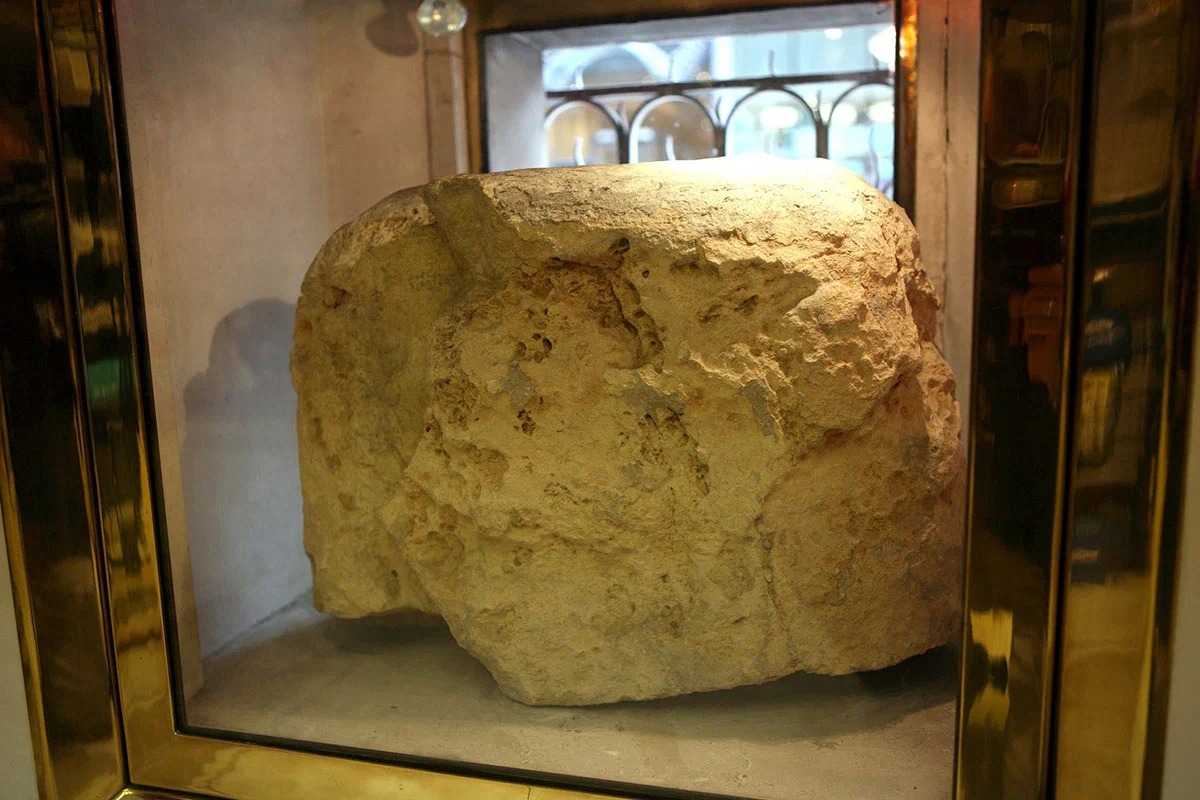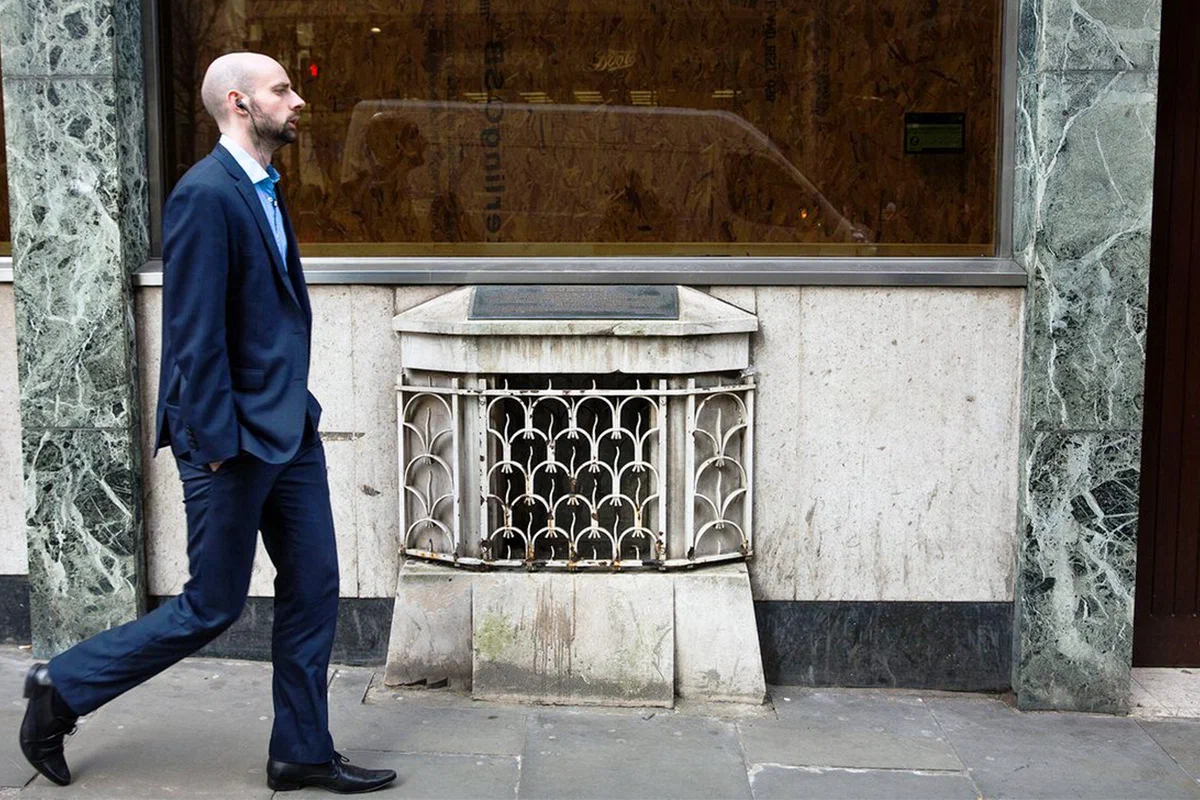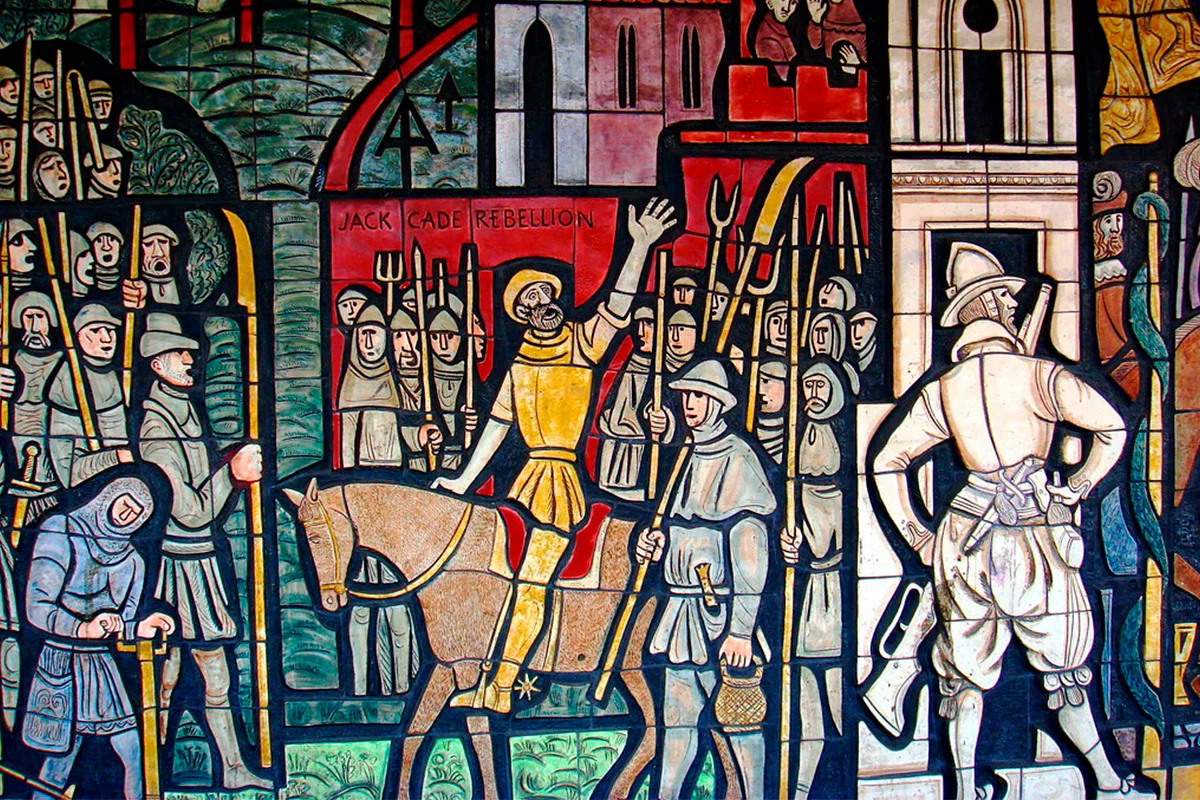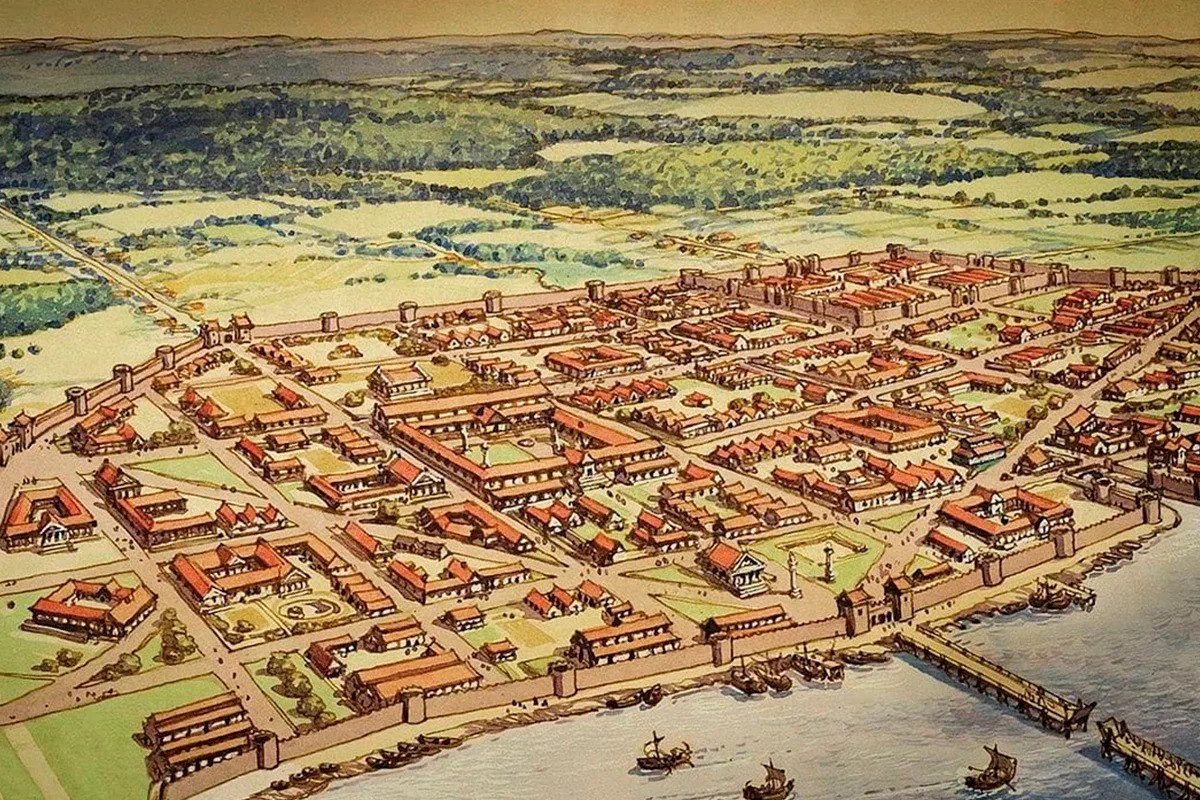London stone: why is the ordinary stone preserved as a pupil?
- May 2, 2022
- 0
In one of the central streets of the City of London lies a large piece of gray limestone of irregular shape and with impact marks and broken edges.
In one of the central streets of the City of London lies a large piece of gray limestone of irregular shape and with impact marks and broken edges.

In one of the central streets of the City of London lies a large piece of gray limestone of irregular shape and with impact marks and broken edges. The piece is relatively small – about half a meter by 30 cm, it’s clear that it was once part of something larger.
This is the so-called London Stone.
It is inconspicuous in appearance and resembles the usual stones that pave the roads.
But for Londoners it is one of the main urban legends shrouded in legends and superstitions. London Stone is one of the symbols of the British capital, the British associate it with the spirit of the city.
Where did the stone come from?
What legends is it associated with?
Why is it considered a symbol of London?
The London Stone is one of the most inconspicuous monuments. You Can Walk A Thousand Times Without Knowing or Caring. Even an interested tourist will not see anything interesting in it.
This nondescript gray cobblestone sits in a custom-built niche near the wall at 111 Cannon Street, behind Victorian bars.

Sometimes the stone is displayed in a museum, but is later returned to the niche.
It was right across the road from where it is now. But in the XIX century he began to hinder the movement and moved to the Svitin church.
What is so special about an ordinary stone?
First, the stone is very old. Mention of him in documents dates back to the time of King Ethelstan in the early X century. And even then it was written as an old, familiar landmark.
Londoners have long associated many urban traditions with stone. The location of houses and districts can be shown for him.
Authorities issued decrees, treaties and oaths on stone. In ancient times, the mayor swore on him and finally struck the stone with his wand. Coincidentally, even the name of Henry de Londonstone, the first mayor of London, is translated as London Stone.

When the Londoners revolted in 1450, their leader, Cade, publicly crashed into a rock and declared himself the new lord of the city.
The attitude of Londoners to stone was so impressive that when Svitina Church was bombed during WWII and the stone remained intact, new houses were built around the stone and a niche was built inside the wall.
It is not known exactly where it came from, but there are at least three absolutely amazing legends about it.
The first version states that the stone once came from ancient Troy.
The legend of London connects the foundation of the city with the legend that after the fall of Troy, a group led by the legendary leader Brutus fell into obscurity. Brutus had a vision in which the goddess Diana ordered him to sail far beyond the sea, to new islands. According to the legend, there lived terrible giants led by Gog and Magog. The natives of Troy defeated them. And they founded the city. Diana ordered that a bunker be built on the hill. And the stone allegedly brought from Troy became the basis for it. Therefore, it is also called Brutus stone.
The second version is not so heroic, almost as old as the old one.

According to him, the city was named Londinium in 43 AD. It was founded by the Romans. Gradually, it became the center of a developed and powerful province. And the stone was part of the stele from which all the distances and directions of Roman roads on the island were extracted.
In this respect, the stone was something like the zero meridian of the Roman period, the center of civilization.
Proponents of another version claim that the London Stone is the stone from which Arthur drew his sword. Allegedly, the magical properties of the stone were known to the English occultists, and they always tried to settle nearby.
A fantasy-like version suggests that London was before the World Flood. And the only thing left on the water is the stone.
Despite the various explanations for the stone’s origin, one thing is clear: for Londoners it has always symbolized that their city was very ancient, mystical, and was the center of civilization in misty Albion.
Local belief says: “As long as Brutus’ stone remains intact, London will prosper!”.
Source: GSM Info
I’m Maurice Knox, a professional news writer with a focus on science. I work for Div Bracket. My articles cover everything from the latest scientific breakthroughs to advances in technology and medicine. I have a passion for understanding the world around us and helping people stay informed about important developments in science and beyond.